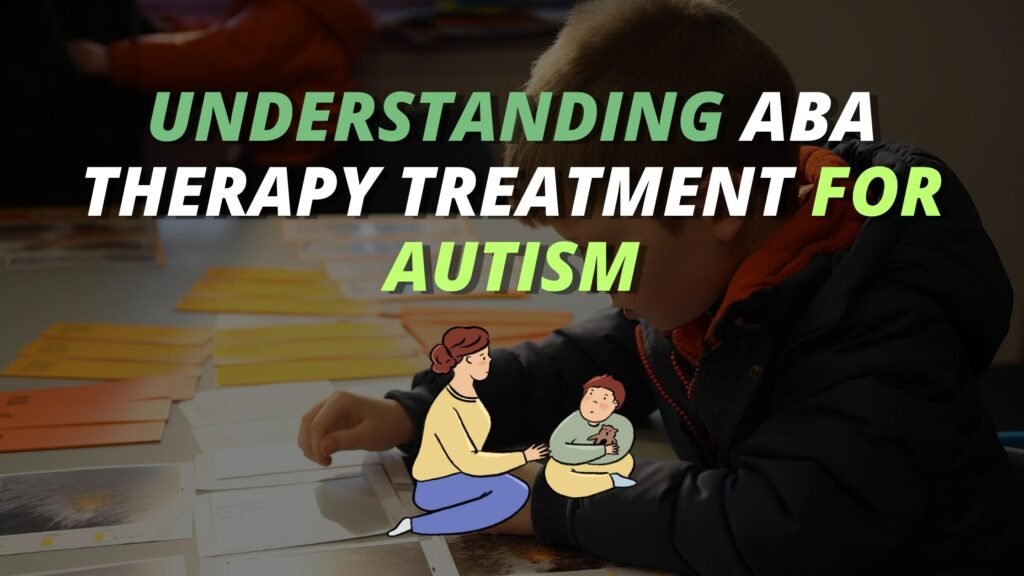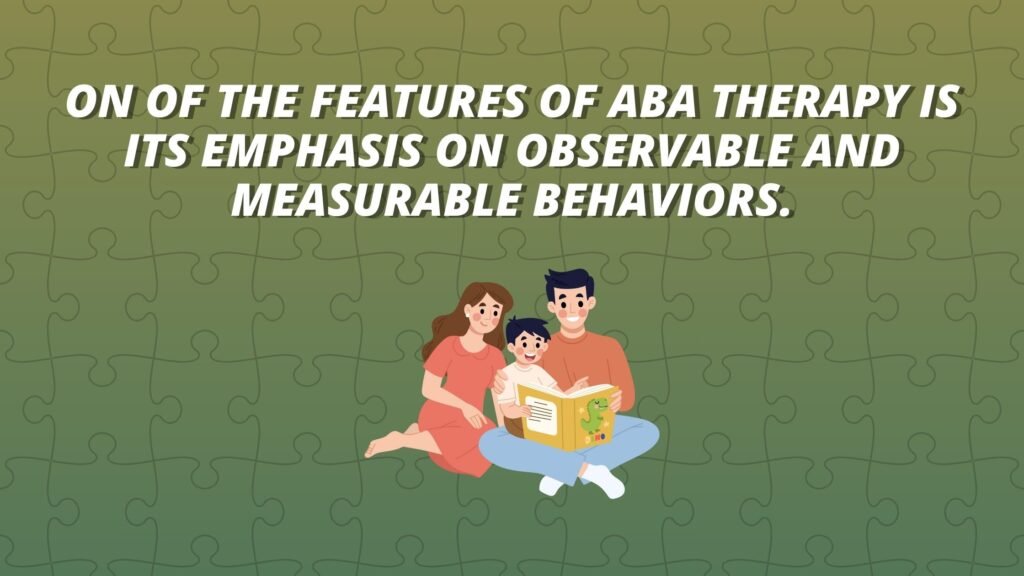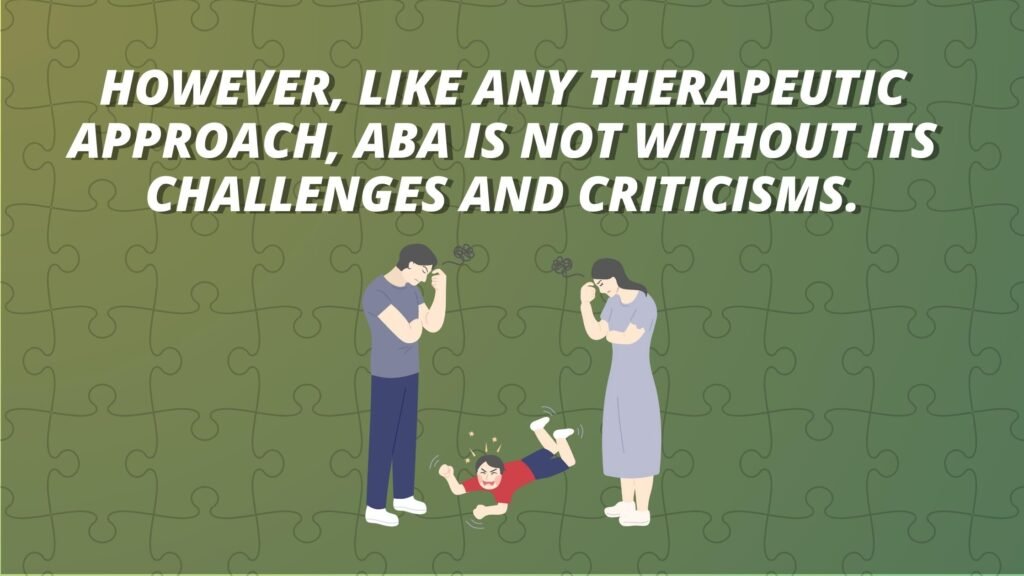Autism Spectrum Disorder(ASD) is a developmental issue that affects every 1 in 36 individuals, as per reports. It is a developmental condition that affects individuals at a very young age and remains throughout their life.

Recently though, a lot of intervention techniques have been introduced for the correction of this therapy. One of these therapies is ABA(Applied Behavior Analysis) therapy, and in this blog, we will understand how ABA therapy intervenes against the symptoms of Autism Spectrum Disorder(ASD).
What is ABA Therapy?
ABA therapy is a therapeutic intervention that has its foundation in the principles of learning theory. By examining and enhancing the behaviors with full priority, ABA offers a proper system and a data-driven approach to the intervention of Autism.

This enables practitioners to assess, analyze, and modify the behaviors with precision. ABA places extreme importance on the environment’s influence on behavior and the role of reinforcement and punishment in shaping the actions of individuals.
Behavior Intervention Plans are strategies designed to combat specific behaviors and are key components of ABA interventions. Also, data collection and analysis are key factors in ABA therapy to ensure its effectiveness. This systematic and evidence-based approach has made ABA widely applicable across various settings and populations, with a notable impact on individuals with Autism Spectrum Disorder (ASD) and beyond.

Ethical considerations have been raised within the ABA community as to whether engineering someone’s behavior is the ethical thing to do so.
READ MORE: Don’t Miss These Cons When Looking For ABA Therapy
The Core Principles of ABA Therapy
The core principles of ABA therapy are as follows:
Behavioral Assessments
ABA therapy begins with a behavioral assessment and an in-depth examination aimed at
The journey of ABA therapy begins with a meticulous behavioral assessment, and an in-depth understanding of the unique characteristics, challenges, and strengths of the individual. This becomes the foundation for creating targeted interventions.
Targeted Interventions
Based on the insights gained from the assessment, ABA practitioners develop specific, measurable, achievable, relevant, and time-bound goals. These goals guide the design of interventions based on the individual’s needs, ensuring a highly personalized approach.
Data-Driven Decision-Making
ABA therapy relies on thorough data collection and analysis. Practitioners continually gather data to track progress, identify patterns, and make informed decisions about adjusting interventions. Data mining is the key to ABA therapy’s success. This commitment to data-driven decision-making enhances the precision and effectiveness of the therapy.
Continuous Evaluation
The dynamic nature of ABA therapy involves ongoing evaluation. Practitioners continuously assess the effectiveness of interventions, allowing for real-time adjustments to accommodate the evolving needs of the individual.
ABA Therapy Treatment for Autism
Here’s how ABA therapy helps with the intervention of Autism:
Early Intervention
An important feature of ABA therapy’s success lies in its ability to produce the desired result as an early intervention for children with Autism. Research consistently highlights the positive impact of early and intensive ABA intervention on developmental outcomes. Early engagement in ABA therapy can significantly enhance communication skills, social interactions, and adaptive behaviors, laying a solid foundation for future growth.
Individualized Treatment Plans
A good thing about ABA therapy is its recognition that each individual with autism is unique. With distinct strengths, challenges, and learning styles, a one-size-fits-all approach would not be right. ABA practitioners craft individualized treatment plans that consider the specific needs, preferences, and abilities of the individual, ensuring a bespoke and effective intervention.
Behavior Reduction and Skill Acquisition
ABA therapy adopts a comprehensive approach that addresses both challenging behaviors and skill development. Behavior reduction strategies focus on decreasing behaviors that may limit learning and social interactions, promoting a more helpful environment for skill acquisition. Simultaneously, skill acquisition targets the development of essential life skills, empowering individuals to navigate daily challenges more effectively.
Parental Involvement
The collaborative nature of ABA therapy often involves active participation from parents or caregivers. Recognizing the pivotal role of the family, ABA practitioners engage with parents to provide training, support, and guidance. This collaborative effort extends the impact of ABA interventions into the natural environment, facilitating the generalization of skills beyond the structured therapy setting.
Integration into Daily Life
ABA therapy’s effectiveness extends beyond clinic-based sessions. The ultimate goal is to foster the generalization of skills into various settings, including home, school, and community environments. ABA practitioners work diligently to ensure that the skills acquired during therapy seamlessly integrate into the individual’s daily life, promoting long-term success and independence.
Advocacy and Support
In addition to direct therapeutic interventions, ABA practitioners often serve as advocates for individuals with autism and valuable sources of support for their families. Navigating the complexity of education, healthcare, and community engagement can be challenging for families affected by autism. ABA practitioners play a pivotal role in offering guidance, resources, and advocacy to empower families in their journey.
Conclusion
ABA therapy treatment for autism emerges as a dynamic and evidence-based approach that addresses the diverse needs of individuals on the autism spectrum. Through thorough assessment, individualized interventions, and a dual focus on behavior reduction and skill acquisition, ABA therapy provides a comprehensive framework for supporting individuals with autism in realizing their full potential.
As the field continues to evolve, the integration of skills into daily life positions ABA therapy as a benchmark in the holistic care of individuals with autism. By promoting collaboration with families and advocating for individuals with autism, ABA practitioners contribute significantly to enhancing the quality of life for those on the spectrum and promoting a more inclusive society.
